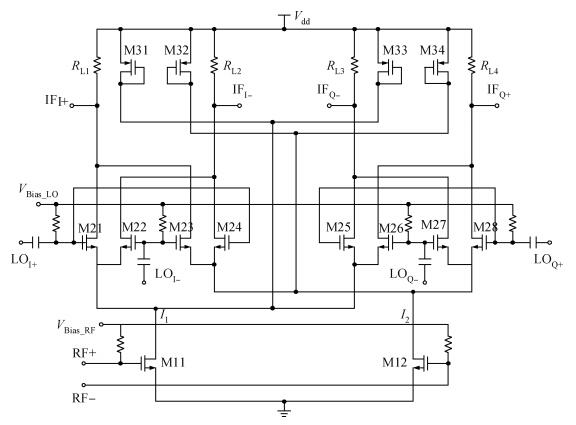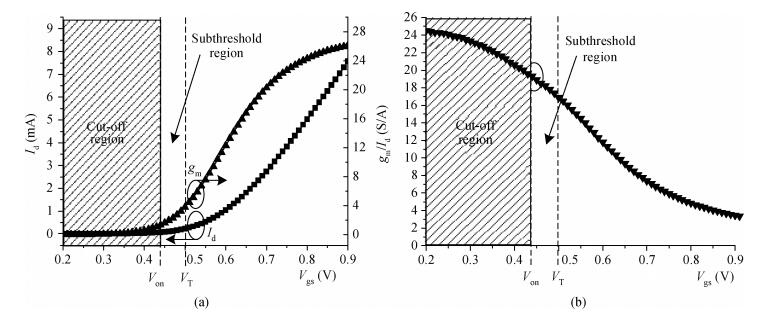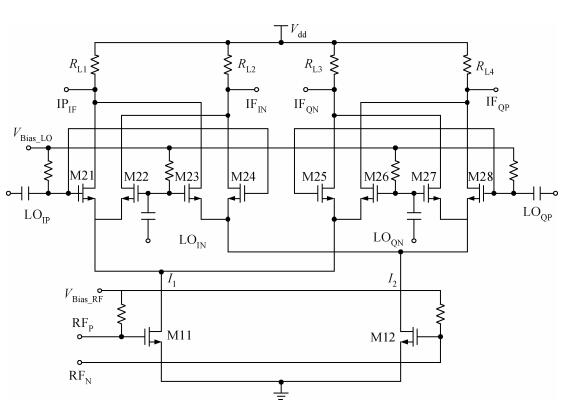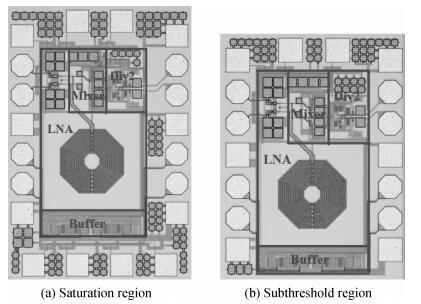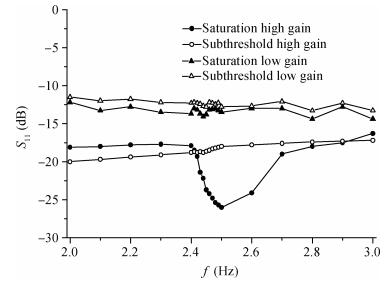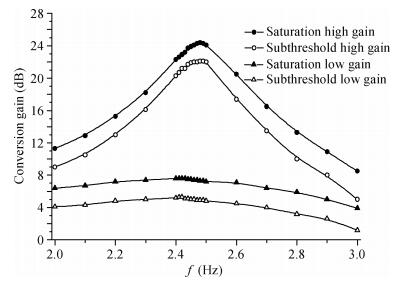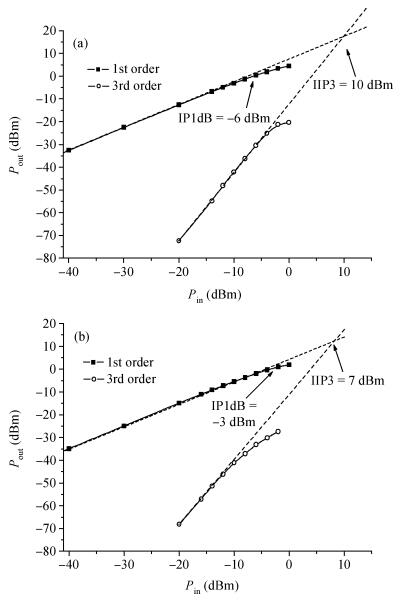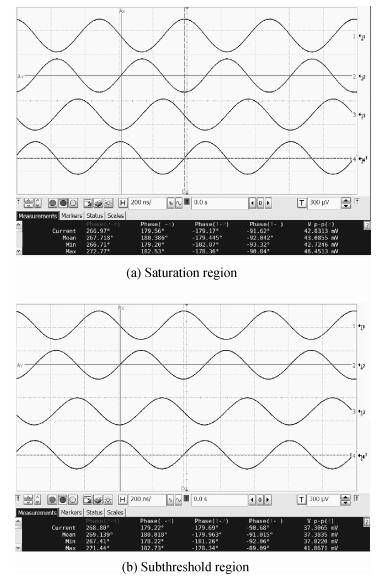| Citation: |
Meng Zhang, Zhiqun Li, Zengqi Wang, Chenjian Wu, Liang Chen. Design of ultralow power receiver front-ends for 2.4 GHz wireless sensor network applications[J]. Journal of Semiconductors, 2014, 35(1): 015005. doi: 10.1088/1674-4926/35/1/015005
****
M Zhang, Z Q Li, Z Q Wang, C J Wu, L Chen. Design of ultralow power receiver front-ends for 2.4 GHz wireless sensor network applications[J]. J. Semicond., 2014, 35(1): 015005. doi: 10.1088/1674-4926/35/1/015005.
|
Design of ultralow power receiver front-ends for 2.4 GHz wireless sensor network applications
DOI: 10.1088/1674-4926/35/1/015005
More Information
-
Abstract
This paper presents the design of an ultralow power receiver front-end designed for a wireless sensor network (WSN) in a 0.18 μm CMOS process. The author designs two front-ends working in the saturation region and the subthreshold region respectively. The front-ends contain a two-stage cross-coupling cascaded common-gate (CG) LNA and a quadrature Gilbert IQ mixer. The measured conversion gain is variable with high gain at 24 dB and low gain at 7 dB for the saturation one, and high gain at 22 dB and low gain at 5 dB for the subthreshold one. The noise figure (NF) at high gain mode is 5.1 dB and 6.3 dB for each. The input 1 dB compression point (IP1dB) at low gain mode is about -6 dBm and -3 dBm for each. The front-ends consume about 2.1 mA current from 1.8 V power supply for the saturation one and 1.3 mA current for the subthreshold one. The measured results show that, comparing with the power consumption saving, it is worth making sacrifices on the performance for using the subthreshold technology. -
References
[1] Oh N J, Lee S G. Building a 2.4-GHz radio transceiver using IEEE 802.15.4. IEEE J Circuits Devices Mag, 2006, 21:43[2] Zhang Hao, Li Zhiqun, Zhang Meng, et al. A 2.4 GHz low-IF RF front-end for wireless sensor networks. Microwave and Millimeter Wave Technology (ICMMT), 2010:225 http://www.ti.com/lit/ds/symlink/cc2592.pdf[3] Razavi B. Design of analog CMOS integrated circuits. Xi'an:Xi'an Jiaotong University Press, 2003[4] Nguyen T K, Kim C H, Ihm G J, et al. CMOS low-noise amplifier design optimization techniques. IEEE Trans Microw Theory Tech, 2004, 52(5):1433 doi: 10.1109/TMTT.2004.827014[5] Alam S K, DeGroat J. A 1.5 V 2.4 GHz differential CMOS low noise amplifier for Bluetooth and wireless LAN applications. IEEE North-East Workshop on Circuits and Systems, 2006:13[6] Zhang Meng, Li Zhiqun. Design of low power common-gate low noise amplifier for 2.4 GHz wireless sensor network applications. Journal of Semiconductors, 2012, 33:1050051[7] Lin C, Kalkur T S. A 2.4 GHz common-gate LNA using on-chip differential inductors in a 0.18μm CMOS technology. International Conference on Electrical Communications, and Computers, 2009:183 https://www.ee.columbia.edu/~harish/uploads/2/6/9/2/26925901/c18.pdf[8] Li Wenyuan, Wang Zhigong, Mao Yinwei. CMOS quadrature modulator and up-conversion mixer for 802.11a wireless LAN systems. Chinese Journal of Semiconductors, 2007, 28:1364 http://www.oalib.com/paper/1523164[9] Perumana B G, Mukhopadhyay R, Chakraborty S, et al. A low-power fully monolithic subthreshold CMOS receiver with integrated LO generation for 2.4 GHz wireless PAN applications. IEEE J Solid-State Circuits, 2008, 43(10):2229 doi: 10.1109/JSSC.2008.2004330[10] Allen P E, Holberg D R. CMOS analog circuit design. 2nd ed. New York:Oxford University Press, 2002[11] To K H, Park Y B, Rainer T, et al. High frequency noise characteristics of RF MOSFETs in subthreshold region. IEEE Radio Frequency Integrated Circuits Symposium, 2003:163[12] Borremans J, Thijs S, Wambacq P, et al. A fully integrated 7.3 kV HBM ESD-protected transformer-based 4.5-6 GHz CMOS LNA. IEEE J Solid-State Circuits, 2009, 44(2):344 https://cris.cumulus.vub.ac.be/portal/en/persons/dimitri-linten(e1bf0988-1f5c-40f8-a5fb-19bab990cfd0).html[13] Fiorelli R, Villegas A, Peralias E, et al. 2.4-GHz single-ended input low-power low voltage active front-end for ZigBee applications in 90 nm CMOS. 20th European conference on Circuit Theory and Design (ECCTD), 2011:829 doi: 10.1007/s10470-016-0802-5[14] Nguyen T K, Kang H, Kim N S, et al. A low-power CMOS dual-band RF receiver for IEEE 802.15.4-based sensor node applications. Microwave and Optical Technology Letters, 2010, 51(1):163 http://ieeexplore.ieee.org/document/6700550/ -
Proportional views





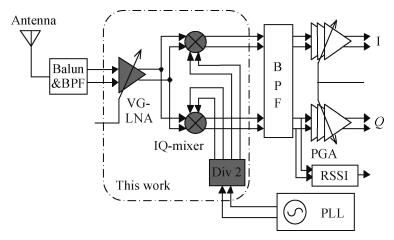
 DownLoad:
DownLoad:


